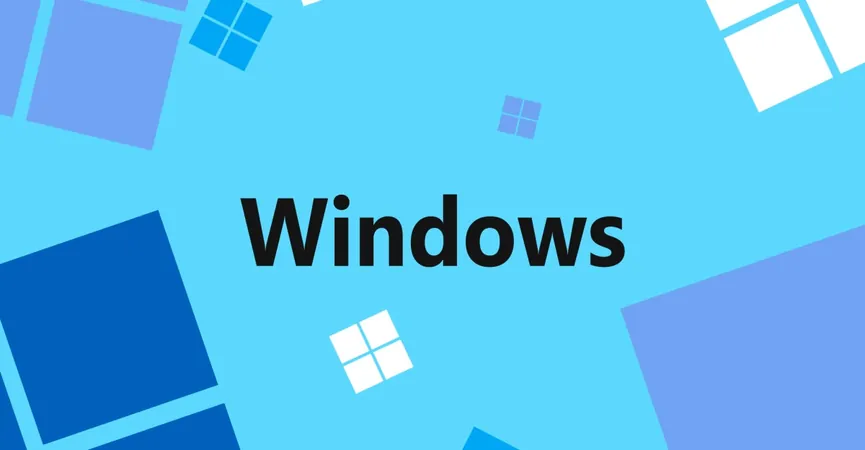
Microsoft Tightens Grip: No More Skipping Microsoft Account for Windows 11 Setup!
2025-03-28
Author: Noah
Introduction
In a bold move to reinforce its ecosystem, Microsoft is eliminating a well-known loophole in its Windows 11 setup process that previously allowed users to bypass creating a Microsoft account. The latest Insider Preview builds reveal that the company is removing the bypassnro command, which had been a simple way for many, especially business setups or those who prefer not to be linked to a Microsoft account, to proceed without online authentication.
Historical Context
Historically, users could use the bypassnro command during installation to skip connecting to the internet and logging into a Microsoft account. Now, with Microsoft's heightened focus on security and a seamless user experience, they are enforcing that every user finishes their setup with an active Microsoft account and internet connectivity. The company stated, "We’re removing the bypassnro.cmd script from the build to enhance security and user experience of Windows 11."
Temporary Workarounds
For those who might still wish to avoid this requirement temporarily, as of now, a registry edit can reactivate the bypass script. Users can enter a command in the command prompt during the initial setup (press Shift + F10) to enable it. However, this workaround may not last long, as Microsoft seems determined to close any gaps that allow users to avoid linking their devices to its services.
Alternatives for IT Departments
Alternatives like the unattended.xml automation method exist, allowing seasoned IT departments to configure multiple machines without endless setup prompts, but this method can be complicated and less user-friendly for the average consumer.
Impact on Windows 10 Users
As a part of this shift, Microsoft is making it increasingly challenging for users to upgrade from Windows 10, which will cease support soon, in October. These new measures include strict TPM 2.0 requirements for older PCs, as well as aggressive prompts encouraging users to buy new hardware. Moreover, the company has also limited the installation of Windows 11 using older product keys.
Conclusion
With these changes, it appears Microsoft is not just pushing towards a unified user experience but also ensuring they capture users within their ecosystem. The question remains: how will consumers respond to these tightening restrictions, and will it lead to frustration among those who prefer more freedom in their operating systems? Stay tuned as this situation develops!









 Brasil (PT)
Brasil (PT)
 Canada (EN)
Canada (EN)
 Chile (ES)
Chile (ES)
 Česko (CS)
Česko (CS)
 대한민국 (KO)
대한민국 (KO)
 España (ES)
España (ES)
 France (FR)
France (FR)
 Hong Kong (EN)
Hong Kong (EN)
 Italia (IT)
Italia (IT)
 日本 (JA)
日本 (JA)
 Magyarország (HU)
Magyarország (HU)
 Norge (NO)
Norge (NO)
 Polska (PL)
Polska (PL)
 Schweiz (DE)
Schweiz (DE)
 Singapore (EN)
Singapore (EN)
 Sverige (SV)
Sverige (SV)
 Suomi (FI)
Suomi (FI)
 Türkiye (TR)
Türkiye (TR)
 الإمارات العربية المتحدة (AR)
الإمارات العربية المتحدة (AR)